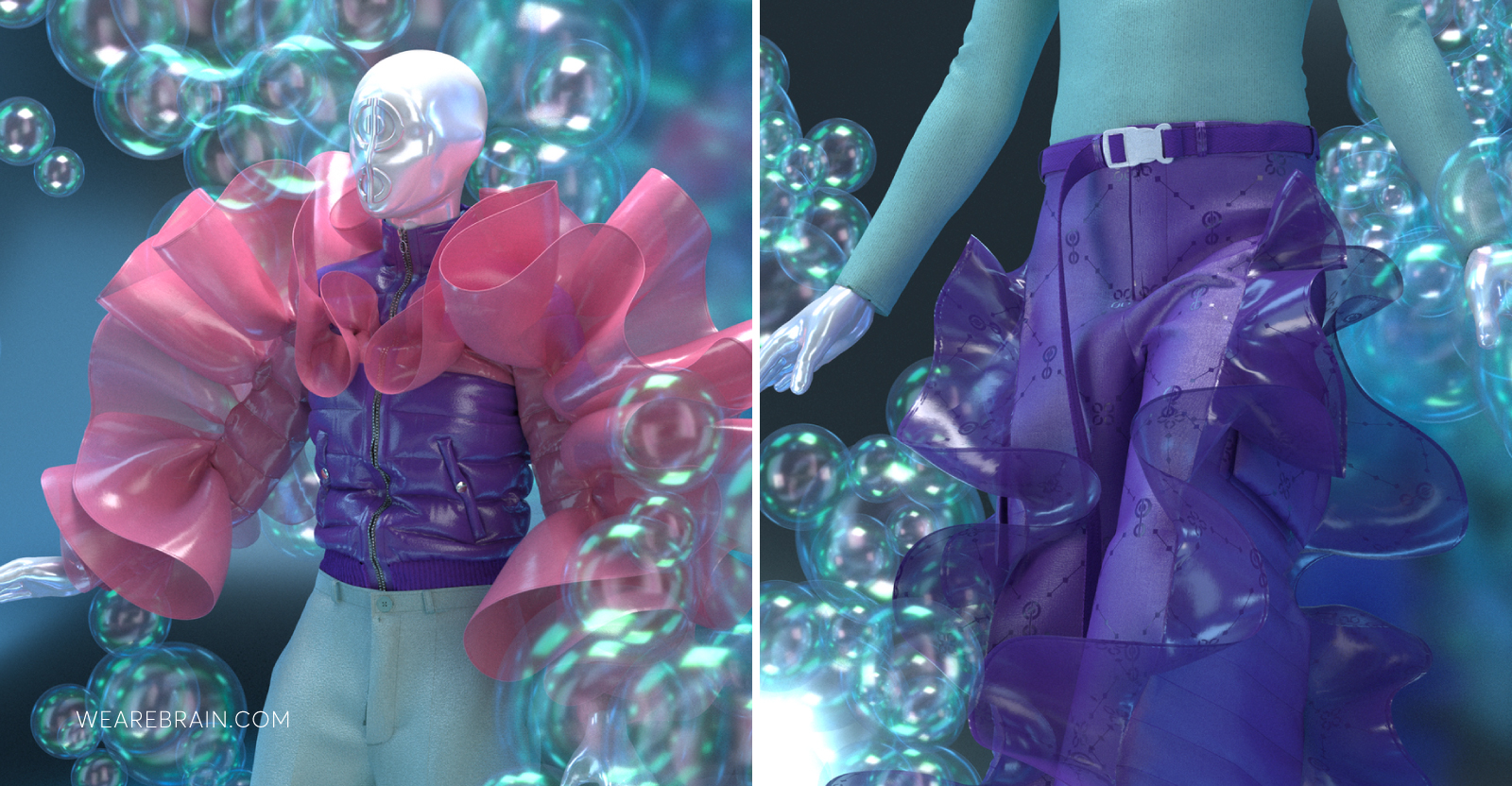Digital fashion: binary is the new black

The fashion world has come under widespread scrutiny in recent years due to its poor sustainability efforts and global waste footprint. But thanks to new immersive technologies and consumer demand for greener practices, the fashion industry is pivoting to the digital world to satisfy consumer and industry needs.
Thankfully, there’s an alternative that can help consumers remain on trend without negatively impacting the environment: digital fashion. The advent of new marketplaces and digital worlds like the metaverse has created fresh customer experiences for people wanting to express their personalities through their virtual persona.
Let’s take a look at the digital fashion industry and its marketplace to see just how this emerging trend could improve the fashion industry’s poor reputation for sustainability.
What is digital fashion?
Digital fashion refers to clothes and accessories that exist in the digital/virtual world, instead of the physical. Digital garments can only be “worn” using augmented reality (AR) or through virtual reality (VR) in digital platforms such as the different metaverses, or video game environments.
Digital fashion uses 3D technology to create designs that exist as pixels on a screen and can never be physically worn by someone. Supporters and early adopters of digital fashion see it as a way for people to ‘express themselves through their clothes without wearing them’.
The digital fashion concept isn’t new
People have been purchasing digital accessories via social media filters for a number of years now. Even the gaming skins market has grown into a multi-billion dollar business, where players can buy customised outfits/skins for their gaming avatars, like in Fortnite for example.
This set the stage for the market, and now we are seeing the convergence of our digital and physical worlds happening in real-time. With the metaverse and Web3 age rapidly approaching, digital fashion designers are able to develop digital fashion pieces for people to express themselves in the binary universe through their online digital avatars.
Digital fashion houses
The digital fashion industry operates similarly to the physical one in the sense that there are still designers and fashion houses dedicated to creating artistic garments for fashion-minded consumers. So, digital fashion houses exist to produce digital-only garments instead of physical ones.
One of the most common ways digital fashion is being bought and sold is through non-fungible tokens (NFTs). Other digital fashion houses sell their garments online and ‘fit’ them to your photos.
The Fabricant
The Fabricant is a leading digital fashion house and one of the first on the fashion NFT trading market back in 2018. Focused on high-dollar couture, The Fabricant releases its products available via blockchain marketplaces such as The Dematerialised, Binance, Star Atlas, Nifty Gateway, and Async art. The garments can easily be integrated into AR technologies and gaming engines. The Fabricant is most famous for selling the world’s first digital-only garment on blockchain for $9,500 in 2019.
Auroboros
London-based Auroboros focuses on high-end couture and is known for being the first fashion house to present its digital-only collection at London Fashion Week. The 14-piece ‘Biomimicry Collection’ shown at London Fashion Week can be purchased on their website, via the fashion game Drest, and the digital fashion marketplace Dress-X for between £100-450 each.
Just like physical fashion houses, digital fashion houses can also release their products to the public through marketplaces.
Digital fashion marketplaces
Digital fashion marketplaces are websites where you can shop and purchase digital garments and accessories. They function like a regular e-commerce site but the product you buy is not physical and doesn’t get shipped to you. Instead, your newly purchased digital goods can only be used in virtual worlds like video games, social media, the metaverse, and VR platforms.
There are a host of digital fashion marketplaces available for online shoppers and digital fashionistas to download the latest binary textiles. The top 2 digital fashion marketplaces are DressX and XR Couture
DressX
Launched in 2019, DressX has become the most famous digital fashion marketplace that sells virtual clothing items and collections from the most well-known brands. When purchasing a product, all you need to do is provide a picture of yourself and the DressX 3D engineers will ‘fit’ the digital garment on you and send it back to you. These custom-fitted digital looks usually take a day to deliver and are even Instagram-ready for your posting pleasure.
XR Couture
Founded in 2020, XR couture is a global digital fashion collection platform that was created to help eliminate waste produced by the fashion industry by leveraging technology. XR Couture works similarly to DressX in that all you have to do is send a photo of yourself to their team and they will virtually fit their hyper-real garments on your body. The cool thing about XR Couture is that you are able to select the artist who will work on fitting the garments to your image, plus you can also ask to get your chosen item in various colours.
Why digital fashion is the future
Why are we moving away from threads and fabrics towards pixels and codes for our fashion needs? For two reasons: our digital future and our physical environment.
Digital personas
Our world is approaching the metaverse and Web3 era which is poised to change the way we interact with technology forever. AR and VR technologies allow us to create a unique and immersive digital experience where shoppers can try on items and browse catalogues in a virtual space.
The metaverse will enable the retail and fashion industry to take the digital shopping experience to the next level to create immersive interaction where users can virtually walk through shopping malls and clothing stores from the comfort of their own homes.
This means that a macro trend of digitally-immersed users spending more time online shopping, socialising, trading, entertaining, etc. is gaining momentum. These users are investing a lot more into their online personas and interact more and more in an online environment. This trend sees people spending money on customised digital garments/skins to express individuality in a binary world.
Sustainability
The fashion industry is the 2nd largest polluting industry in the world, after oil. It produces almost 20% of global water waste and 10% of all carbon emissions. Due to this, the fashion industry is in a state of environmental emergency, according to the United Nations Economic Commission for Europe. Furthermore, the textile industry contributes a large amount of plastic waste to the ocean.
Although digital fashion houses still require the use of energy-intensive processes to make NFTs, the other side of the coin is the reduction of samples and waste and numerous resources. This means people can digitally “wear” clothes as much as they like without them having to be physically produced.
Fashion-forward into the future
If you’re looking to stay on-trend and fashionable without negatively impacting the environment then digital fashion is the answer. As more of us begin to embrace the convergence of our physical and digital worlds via the metaverse and Web3, the demand for customised and fashionable digital personas will continue to grow.
Mario Grunitz
Working Machines
An executive’s guide to AI and Intelligent Automation. Working Machines takes a look at how the renewed vigour for the development of Artificial Intelligence and Intelligent Automation technology has begun to change how businesses operate.







